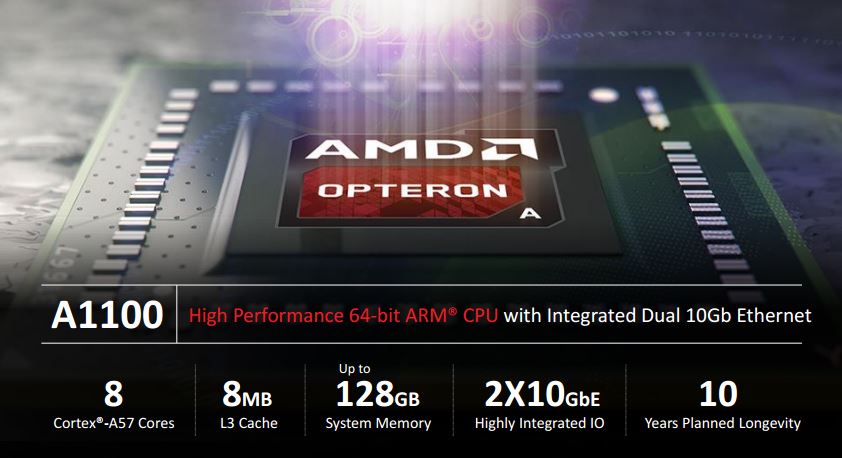This morning we got word that the AMD Opteorn A1100 series is officially released. You may remember the processor code named “Seattle” from our previous articles back in 2014 both on STH in January 2014, July 2014, August 2014, and on Tom’s IT Pro in August 2014. The AMD Opteron A1100 series is the company’s first 64-bit ARM architecture product. We will have a piece on our updated editorial thinking on the new release shortly, but this is a major step for AMD. You can see the previously linked STH articles for the basics of the architecture that we first learned about almost two years ago.
The AMD Opteorn A1100 series
Here is AMD’s slide highlighting the key points. 8x ARM Cortex-A57 cores, 8MB L3 cache, 128GB RAM support thanks to the 64-bit architecture, dual 10GbE. That covers the compute side, although the storage side is intriguing.
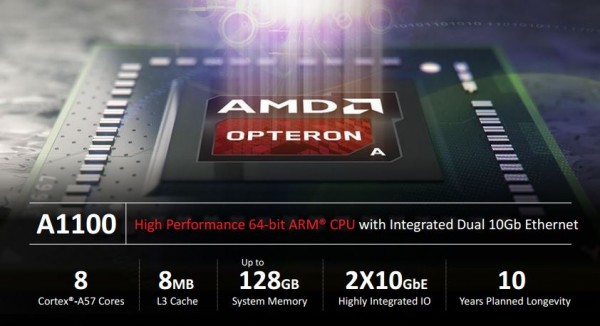
Probably one of the biggest features is 14 ports of SATA 3. We do not have exact details as there are two SATA 3 blocks on the diagram but it does mean that the onboard SATA III capacity is close to a Xeon D platform with an 8-port HBA. There are also more standard SATA 3 ports than a Xeon E5 platform. What that means is that one can add more disks without the added expense and power consumption of an additional HBA. There are only 8 available PCIe 3.0 lanes which is much lower than the Intel Xeon D series, but more than the older than the 2013 Intel Atom C2000 series.
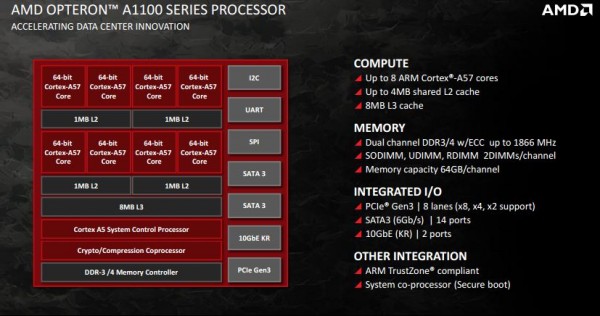
AMD has a bit more on the architecture which we have seen before. There is a dual channel memory controller. This is similar to the Intel Xeon D where there is a dual channel memory controller that can take 2 DIMMs/ channel and therefore up to 128GB of RAM. The memory controller supports DDR3 and DDR4. The DDR3 is likely a holdover to 2014 when the transition to DDR4 was not as complete as it is today. DDR4 prices have fallen so rapidly there is now little sense in choosing DDR3 over DDR4. DDR3 is also limited to 8GB DIMMs or 32GB max for the platform with DDR3.
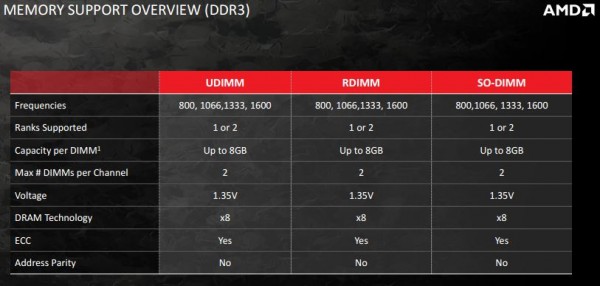
Again, one can see using 4x 32GB DDR4 RDIMMs the platform is capable of 128GB of RAM. DDR4 also adds address parity support. One other interesting note is that the DDR4 speeds are much lower than we see on the Intel side. The Xeon D and Xeon E5 V3 series processors both support 2133MHz DDR4.

There are 3 official launch SKUs. Two 8 core 32W TDP parts clocked at either 2.0GHz or 1.7GHz (A1170 and A1150 respectively.) There is also a quad core part with half the L2 cache (2MB) called the AMD Opteron A1120.
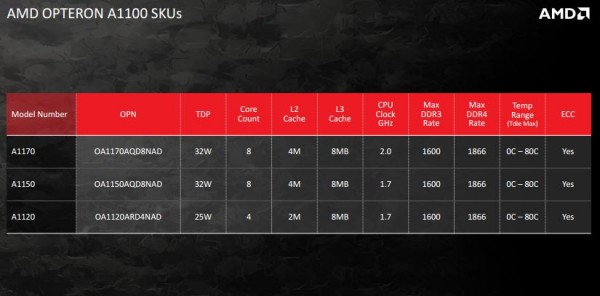
In terms of the package it is a relatively small 27mm x 27mm BGA (non-socketed) package which makes sense fore embedded applications.
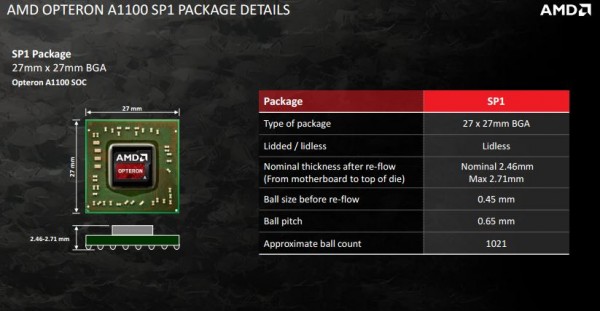
Looking for hardware? AMD has three hardware partners. One might note that there are a few names one might expect to see missing. Namely vendors like HP Enterprise, Dell, Cisco, Huawei, Supermicro, Lenovo, Quanta, Winstron and etc. More on this in our upcoming editorial piece.

While ARM in the mobile phone market is absolutely dominant, in the server world, x86 still wins volume shipments by a staggering amount. AMD recognizes this and has a few key software partners it is launching with.
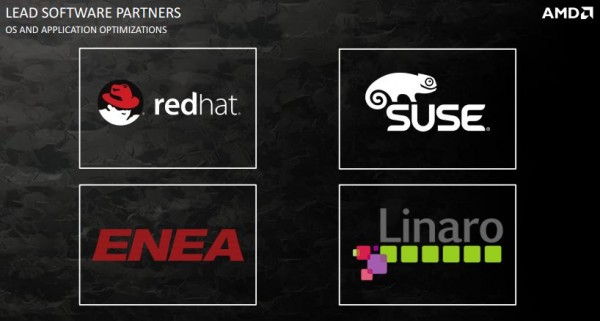
I would have expected to see Ubuntu on that list but it is a solid start. Here are the suggested solution stacks for the AMD Opteron A1100 series.
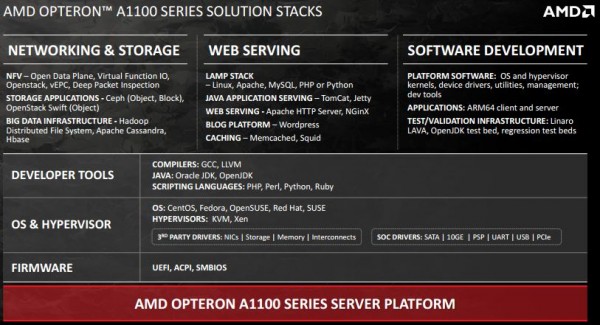
What is excellent here is that we do see CentOS listed under supported OSes. The one question we do have is on the third party driver support as that can be very tricky with specialized add-on hardware (e.g. our Fusion-io experience.) We also see conspicuously absent technologies like Docker which are extremely popular.
Conclusion
Well we finally have some sort of release almost two years after we heard about the products. We have confirmation that this release is coinciding with the second wave of Intel Xeon D products with the key difference being we will see our first Intel Xeon D wave 2 board well before our AMD Opteron A1100 platform. Check back later for our editorial on the release.

